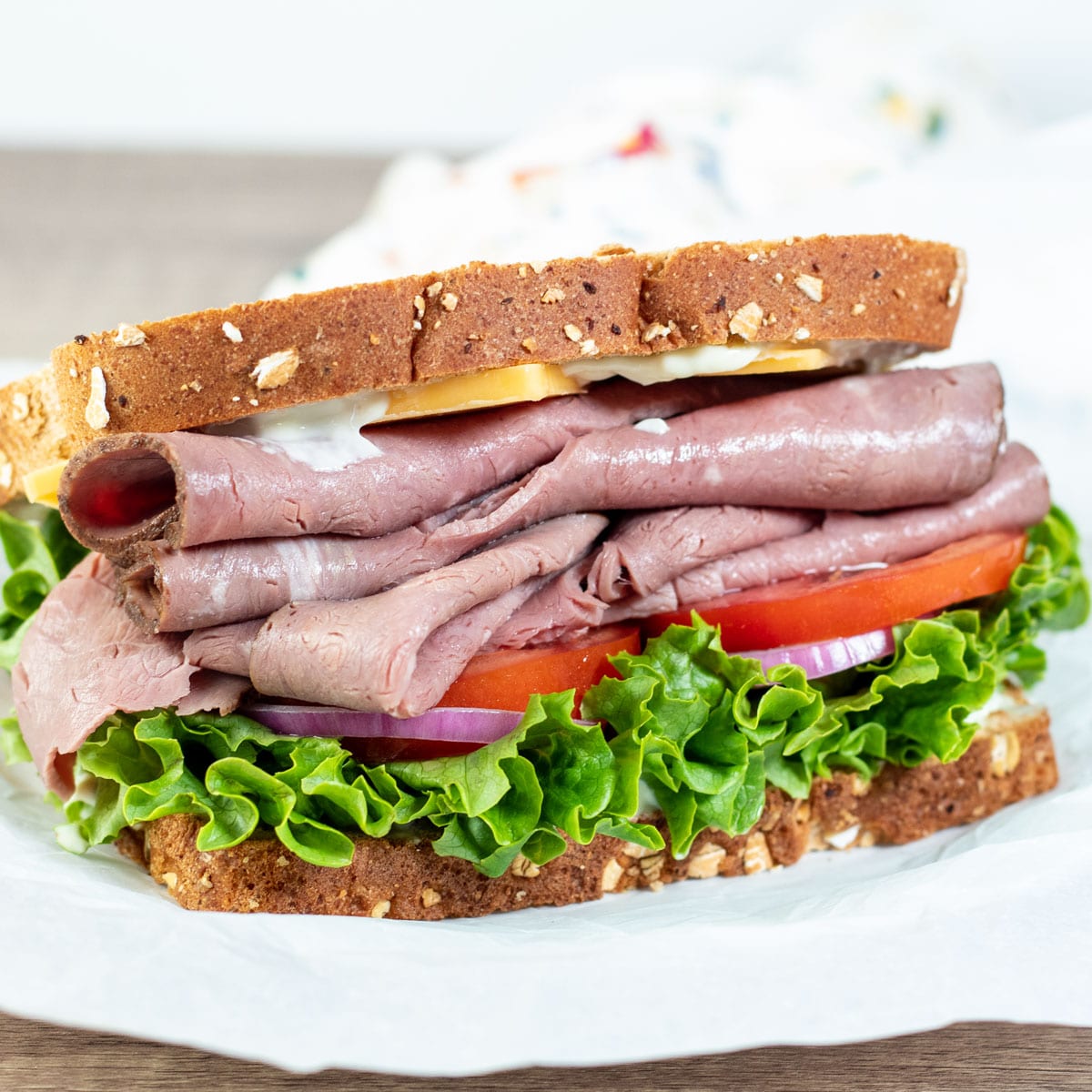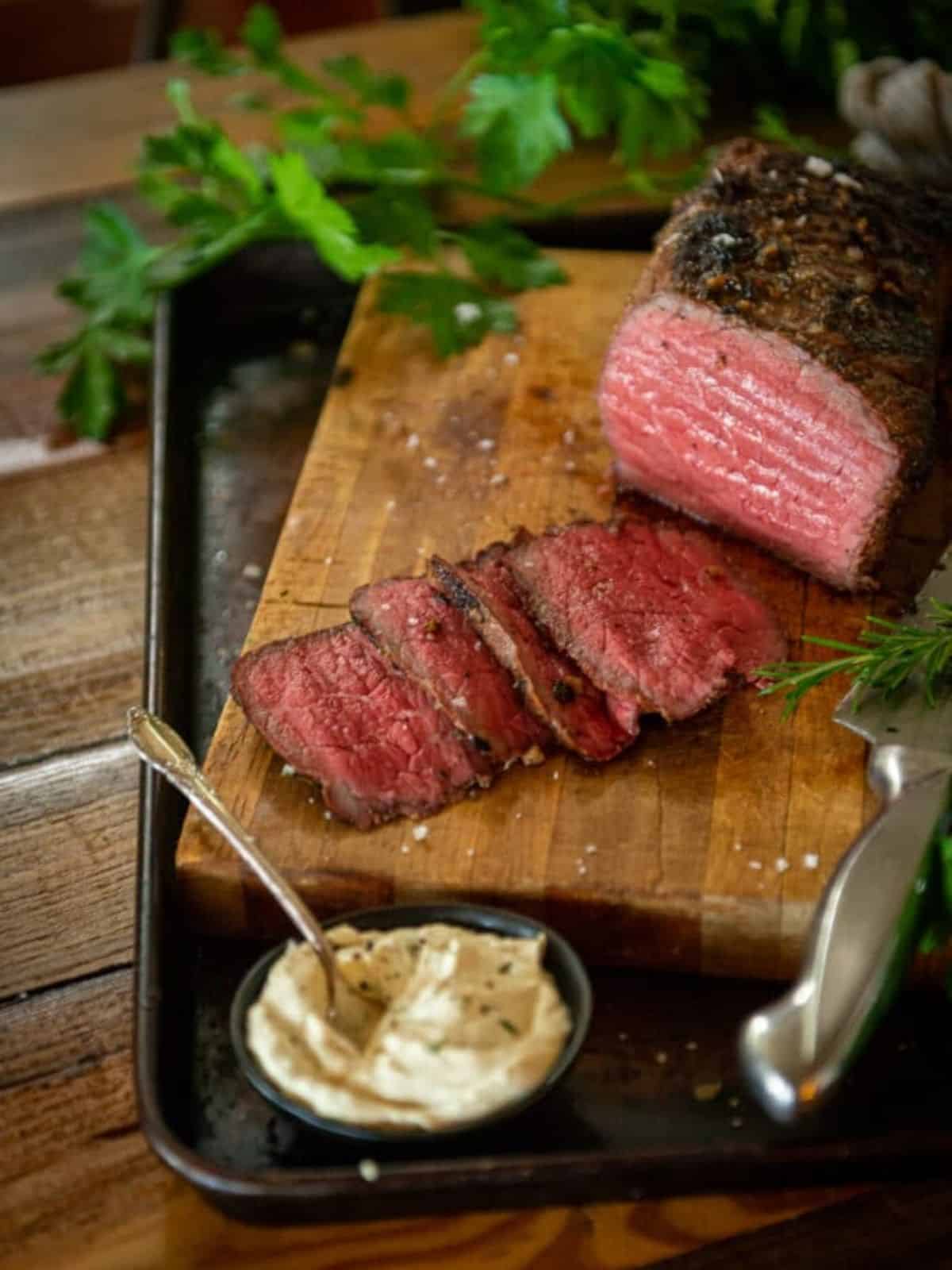Ultimate Roast Beef: A Culinary Symphony Of Flavor And Tenderness
Inspired by your quest for culinary excellence, our team has meticulously analyzed countless articles, consulted with master chefs, and conducted exhaustive research to present you with the ultimate guide to Roast Beef. Within these pages, you will discover the secrets to achieving succulent, juicy, and flavorful roast beef that will impress even the most discerning palate.
Our comprehensive guide covers everything you need to know about Roast Beef, from selecting the perfect cut to mastering the art of roasting to creating delectable sauces and accompaniments. We’ve also included expert tips and techniques to help you elevate your roast beef to restaurant-quality standards, transforming your home kitchen into a culinary haven.
So, prepare to embark on a gastronomic journey that will redefine your understanding of Roast Beef. Allow us to guide you as we explore the symphony of flavors and textures that make this culinary masterpiece a true celebration of taste and tenderness.

Roast Beef Sandwich Recipe | Bake It With Love – Source bakeitwithlove.com
Key Differences: The Ultimate Roast Beef
To provide you with a quick overview, we’ve compiled a table highlighting some key differences in our approach to Roast Beef:
FAQ
This comprehensive FAQ section addresses several common inquiries and misconceptions surrounding the preparation and enjoyment of ultimate roast beef, ensuring a culinary experience that transcends expectations.

Discover the Bavette Steak: A Culinary Gem of Flavor & Tenderness – Source capitalfarms.com
Question 1: What are the key factors to consider when selecting a roast for optimal flavor and tenderness?
When choosing a roast, meticulous attention should be paid to its marbling, aging, and cut. Marbling refers to the delicate streaks of fat within the meat, contributing to succulence and flavor. Adequate aging, typically for a minimum of 28 days, allows natural enzymes to tenderize the meat, resulting in a superior texture. Optimal cuts for roast beef include rib roast, top sirloin roast, and tenderloin roast, each boasting unique characteristics and flavor profiles.
Question 2: How does cooking temperature impact the final outcome of roast beef?
Cooking temperature plays a pivotal role in determining the doneness level of roast beef. For those who prefer rare meat with a tender, slightly pink center, a target internal temperature of 125-130°F (52-54°C) is recommended. Medium-rare, characterized by a warm, pink center, calls for an internal temperature of 130-135°F (54-57°C). Medium, with a slightly pink center transitioning to gray, is achieved at 135-140°F (57-60°C). For well-done roast beef, an internal temperature of 145°F (63°C) or higher is appropriate, resulting in a fully cooked, brown interior.
Question 3: What are some effective techniques for creating a flavorful and crispy crust on roast beef?
Achieving a delectable crust on roast beef requires a combination of seasoning and cooking methods. Generously applying a savory rub, consisting of herbs, spices, and aromatics, enhances the natural flavors of the meat. Roasting the beef at a high temperature, initially, creates a flavorful sear and promotes caramelization. Subsequently, lowering the temperature allows for even cooking and prevents overcooking. Basting the roast with its own juices or a flavorful liquid, such as beef broth or red wine, adds moisture and intensifies the taste.
Question 4: How can I ensure that roast beef is cooked to perfection without the use of a meat thermometer?
While a meat thermometer remains the most precise method for determining doneness, there are alternative approaches to assess the level of cooking. One technique involves using the finger test. Gently pressing the center of the roast, observe the resistance encountered. Rare meat will feel soft and yielding, medium-rare will offer slightly more resistance, and well-done meat will feel firm. Additionally, the roast’s internal temperature can be estimated by touching the surface; a warm surface indicates rare, a slightly warm surface suggests medium-rare, and a hot surface signifies well-done.
Question 5: What are the recommended resting times for roast beef before slicing and serving?
Allowing roast beef to rest before slicing is crucial for achieving optimal tenderness and moisture distribution. The resting period permits the juices to redistribute throughout the meat, preventing them from escaping during slicing. The recommended resting time varies depending on the size of the roast; a general rule is to rest for approximately 15-20 minutes per pound (450 grams) of meat. Covering the roast loosely with aluminum foil helps retain heat and moisture.
Question 6: How can I store and reheat leftover roast beef to maintain its quality?
Proper storage and reheating techniques are essential for preserving the quality of leftover roast beef. Allow the roast to cool completely before storing it in an airtight container in the refrigerator for up to 3 days. When reheating, slice the roast into thin pieces and warm it gently in a skillet or oven at a low temperature. Microwaving is not recommended as it can result in uneven heating and loss of moisture. By following these guidelines, leftover roast beef can be enjoyed with minimal compromise in flavor and texture.
This comprehensive FAQ section has endeavored to address common questions and provide valuable insights into the preparation, cooking, and storage of ultimate roast beef. By embracing these techniques and recommendations, culinary enthusiasts can confidently craft a dish that tantalizes taste buds and satisfies the cravings of discerning diners.
Now, embark on a culinary adventure that celebrates the symphony of flavors and tenderness that is — ultimate roast beef.
Tips
Elevate your roast beef experience with these expert techniques from Ultimate Roast Beef: A Culinary Symphony Of Flavor And Tenderness. By following these guidelines, you’ll achieve a flavorful and melt-in-your-mouth masterpiece every time.
Tip 1: Choose the Right Cut
Start with a prime cut of beef, such as the ribeye, tenderloin, or top sirloin. These cuts offer exceptional marbling and tenderness, ensuring a juicy and flavorful roast.
Tip 2: Season Liberally
Generously season the beef with salt, pepper, garlic powder, and any other desired spices or herbs. Seasoning both inside and out enhances the flavor throughout the roast.
Tip 3: Cook to Internal Temperature
Use a meat thermometer to ensure the beef reaches the desired internal temperature: medium-rare (135°F), medium (145°F), or medium-well (155°F). This guarantees a juicy and tender roast.
Tip 4: Rest Before Carving
After roasting, let the beef rest for at least 30 minutes before carving. This allows the juices to redistribute, resulting in a mor
e tender and flavorful experience.
Tip 5: Slice Against the Grain
For the most tender slices, cut against the grain of the meat. This helps break down the tough fibers, creating a more enjoyable eating experience.
Tip 6: Use a Sharp Knife
Ensure you use a sharp knife for carving. A dull knife will tear the meat and compromise its tenderness.
Tip 7: Serve with Accompaniments
Complement your roast beef with a variety of sides, such as roasted vegetables, mashed potatoes, or a classic gravy. The flavors will harmonize and enhance the overall dining experience.
Mastering these techniques will transform your roast beef into an extraordinary culinary delight. By following these guidelines, you’ll impress your guests with a tender, flavorful, and unforgettable dish.
Ultimate Roast Beef: A Culinary Symphony Of Flavor And Tenderness
Roast beef, the epitome of culinary excellence, tantalizes taste buds with its symphony of flavors and exceptional tenderness. Achieving this culinary masterpiece requires meticulous attention to six fundamental aspects:
- Choice Cut: Prime rib or tenderloin, renowned for their superior marbling.
- Seasoning Symphony: Salt, pepper, garlic, and herbs create a harmonious spice blend.
- Searing Perfection: A crisp golden crust locks in juices and enhances flavor.
- Roasting Precision: Low and slow cooking allows connective tissues to break down, resulting in unparalleled tenderness.
- Basting Brilliance: Regular basting with flavorful liquids infuses the roast with moisture and richness.
- Restful Respite: Allowing the roast to rest ensures even distribution of juices, maximizing flavor and tenderness.
These aspects intertwine seamlessly, like a conductor harmonizing an orchestra. The choice cut provides the foundation, while seasoning transforms it into a symphony of flavors. Searing creates an alluring crust that complements the tender interior achieved through precise roasting. Basting enhances each bite with a burst of moisture, and resting allows the juices to redistribute, culminating in the ultimate sensory experience. Roast beef, a culinary masterpiece, exemplifies the essence of flavor, tenderness, and the artistry of culinary precision.

Exploring the Culinary Symphony: Unraveling the Enigmatic Flavor of – Source dylonssteakhouse.com
Ultimate Roast Beef: A Culinary Symphony Of Flavor And Tenderness
The connection between “Ultimate Roast Beef: A Culinary Symphony Of Flavor And Tenderness” lies in the intricate interplay of ingredients, techniques, and culinary artistry that culminate in a dish that tantalizes taste buds and evokes a symphony of flavors. At the heart of this culinary masterpiece is the careful selection of high-quality beef, expertly seasoned and roasted to perfection. The result is a tender, melt-in-your-mouth experience that forms the foundation of the dish.

Ultimate Smoked Roast Beef – Girl Carnivore – Source girlcarnivore.com
Complementing the succulent beef is a symphony of flavors that dance upon the palate. Aromatic herbs and spices, such as rosemary, thyme, and garlic, infuse the beef with a rich and savory essence. A tangy glaze, crafted from a harmonious blend of mustard, honey, and vinegar, adds a tantalizing sweetness and acidity that perfectly balances the meat’s robust flavors.
The tender beef is then sliced and arranged upon a bed of roasted vegetables, which provide a vibrant contrast in texture and color. Perfectly caramelized carrots, tender parsnips, and crisp green beans add a symphony of earthy sweetness and crunch, elevating the dish to a new level of culinary artistry.